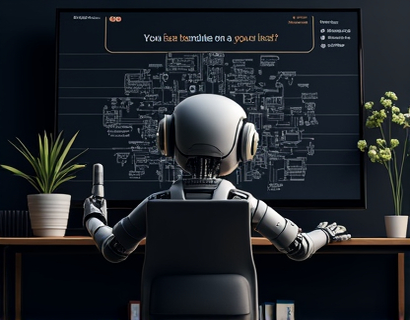Smart Home Innovations: Transforming Daily Life with Cutting-Edge Appliances
In the rapidly evolving landscape of home technology, smart home innovations have emerged as a pivotal force, redefining the way we live and interact with our living spaces. The integration of advanced technology into everyday appliances has given rise to a new era of convenience, efficiency, and comfort. This article delves into the latest high-tech appliances that are reshaping modern living, offering a glimpse into a future where smart solutions enhance every aspect of daily life.
The concept of a smart home extends beyond mere convenience; it represents a holistic approach to living that prioritizes efficiency, sustainability, and personalization. Smart appliances, connected via the internet, can be controlled remotely through smartphones or voice commands, providing unparalleled flexibility and control. These devices not only simplify routine tasks but also contribute to energy savings and a reduced environmental footprint.
Smart Home Appliances: A Closer Look
One of the most significant advancements in smart home technology is the smart refrigerator. No longer just a storage unit for food, modern refrigerators are equipped with features like built-in touchscreens, Wi-Fi connectivity, and even cameras inside the fridge. These features allow users to manage their groceries remotely, receive expiration alerts, and even order groceries online. Some models come with integrated meal planning tools, suggesting recipes based on the ingredients stored inside.
Moving to the kitchen, smart ovens and stoves have revolutionized cooking. These appliances offer precise temperature control, pre-heating capabilities, and even cooking assistance through integrated recipes and step-by-step guidance. Voice-activated controls make it easier than ever to adjust settings without lifting a finger. Some models also feature self-cleaning functions and can be pre-heated from a distance, ensuring your cooking surface is ready when you are.
Lighting and Atmosphere
Lighting is another area where smart technology has made significant strides. Smart LED bulbs can be adjusted for brightness, color temperature, and even color, allowing for a tailored lighting experience that adapts to different times of the day and activities. These bulbs can be controlled through smart home hubs or voice assistants, creating the perfect ambiance with just a command. Additionally, smart lighting systems can be programmed to simulate occupancy when you're away, enhancing home security.
Smart thermostats have become a cornerstone of smart home technology, offering advanced climate control and energy management. These devices learn your temperature preferences over time and adjust settings automatically to optimize comfort and energy efficiency. Some models can integrate with weather forecasts to pre-adjust temperatures, ensuring your home is always at the perfect temperature upon arrival. Remote access allows you to adjust settings from anywhere, making it easier to save energy and reduce costs.
Security and Safety
Security is a paramount concern in modern homes, and smart technology has provided innovative solutions to enhance safety. Smart security cameras with night vision and motion detection offer real-time monitoring and alerts, allowing homeowners to stay informed and secure. These cameras can be accessed via smartphones, enabling you to check on your home from anywhere. Some systems also integrate with smart locks, providing keyless entry and the ability to grant temporary access to guests or service providers.
Smart smoke detectors and carbon monoxide sensors are another critical component of a smart home security system. These devices can send instant alerts to your smartphone in case of an emergency, providing early warning and potentially saving lives. Some advanced models even integrate with smart speakers, alerting you through voice notifications for added convenience.
Home Entertainment
The living room has also undergone a transformation with the advent of smart home technology. Smart TVs with built-in streaming capabilities and voice control features have become the centerpiece of modern entertainment systems. These TVs can connect to various streaming services, allowing for seamless access to movies, shows, and music. Some models even support 3D and HDR for an immersive viewing experience.
Smart sound systems, including wireless speakers and subwoofers, offer high-quality audio that can be controlled and adjusted through a single app. These systems can fill any room with rich, clear sound, creating an ideal environment for movie nights or casual listening. Some systems even support voice commands, making it easy to adjust volume or skip tracks without leaving your seat.
Voice Control and Smart Hubs
At the heart of many smart home systems is voice control technology, powered by advanced AI assistants. Devices like smart speakers enable hands-free control of various smart appliances, from adjusting the thermostat to playing music. These assistants learn your preferences and can perform tasks based on context, such as turning on lights when you enter a room or starting your morning coffee routine.
Smart hubs serve as the central nervous system of a smart home, connecting and coordinating various devices and systems. These hubs support multiple protocols and can integrate with a wide range of brands and models, ensuring a seamless and cohesive smart home experience. They can automate complex routines, such as turning off all lights and locking doors with a single command, enhancing both convenience and security.
Energy Efficiency and Sustainability
One of the most compelling reasons to adopt smart home technology is the potential for energy savings and environmental sustainability. Smart appliances are designed to optimize energy usage, reducing waste and lowering utility bills. For instance, smart plugs can monitor and control the power consumption of devices, turning them off when not in use to prevent phantom energy draw.
Smart energy monitors provide real-time data on energy consumption, helping homeowners identify areas for improvement. Some systems can even integrate with renewable energy sources like solar panels, optimizing energy usage and storage. By making informed decisions based on data, homeowners can significantly reduce their carbon footprint and contribute to a more sustainable future.
Challenges and Considerations
While the benefits of smart home technology are undeniable, there are several challenges and considerations to keep in mind. One of the primary concerns is privacy and security. Connected devices can be vulnerable to hacking, potentially exposing personal data and compromising home security. It is crucial to choose reputable brands that prioritize security and to implement strong passwords and regular software updates.
Another consideration is compatibility and interoperability. With numerous brands and protocols in the market, ensuring that devices work seamlessly together can be challenging. Opting for systems that support open standards and are known for their compatibility can help avoid integration issues.
Cost is also a factor, as high-end smart appliances can be expensive. However, the long-term savings on energy and maintenance, along with the enhanced convenience and security, often justify the initial investment. Gradually integrating smart devices into your home can be a cost-effective approach, allowing you to experience the benefits without a significant upfront cost.
Future Trends in Smart Home Technology
The future of smart home technology is exciting, with several trends on the horizon. One of the most promising developments is the integration of artificial intelligence and machine learning, enabling devices to become even more intuitive and personalized. Smart homes of the future will anticipate your needs and preferences, adjusting settings and performing tasks proactively.
Another trend is the expansion of IoT (Internet of Things) devices, with more household items becoming connected and intelligent. From smart furniture to wearable devices that interact with your home environment, the possibilities are vast. The convergence of AI, 5G connectivity, and edge computing will further enhance the performance and reliability of smart home systems.
Sustainability will continue to be a key focus, with innovations aimed at reducing energy consumption and environmental impact. Smart homes will increasingly incorporate renewable energy sources and advanced energy management systems, contributing to a greener planet. Additionally, accessibility features will become more prevalent, ensuring that smart home technology is inclusive and beneficial for all users.
In conclusion, smart home innovations are transforming the way we live, offering unparalleled convenience, efficiency, and comfort. By embracing these technologies, homeowners can create a smarter, more sustainable living environment that adapts to their needs and enhances their quality of life. As the technology continues to evolve, the future of home living looks brighter and more connected than ever before.










































